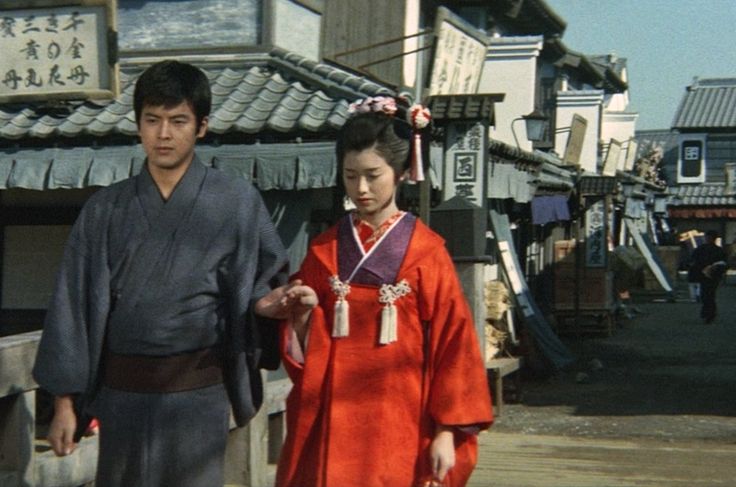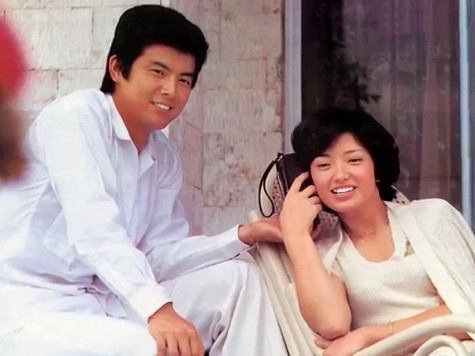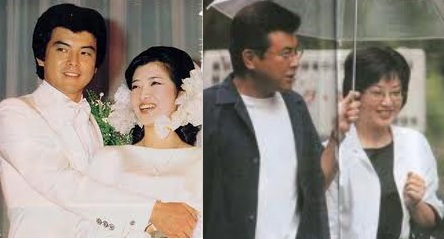Miura Tomokazu and Yamaguchi Momoe are not only the most iconic on-screen couple in Japanese entertainment history — they’re also a rare real-life love story that has stood the test of time. Miura Tomokazu (born 1952) rose to fame in the 1970s as a strikingly handsome actor, starring in numerous youth romance films. His elegance and composed performances earned him a lasting place in the Japanese film industry. Yamaguchi Momoe (born 1959), the most beloved female idol singer and actress of the era, captivated the nation with her soft voice and refined presence. She became a symbol of the hopes and dreams of an entire generation.
The two met and fell in love while working on films in the late 1970s, including The Dancing Girl of Izu (1974) and The Tide of First Love (1975). Their on-screen chemistry made them one of Japan’s most beloved screen couples, and their growing real-life romance captured the public’s imagination.
From on-screen romance to real-life love and devotion
Then, in 1980, at the peak of her fame and just 21 years old, Yamaguchi Momoe stunned fans by announcing her retirement. She chose to step away from the spotlight to marry Miura Tomokazu and devote herself entirely to family life. Her graceful departure and wholehearted devotion to her role as a wife and mother turned her into a national symbol of the “ideal wife” in the eyes of many Japanese women.
Together, Momoe and Tomokazu often portrayed stories of pure, devoted love on screen — tales that deeply resonated with Japanese audiences and helped shape the cultural ideal of romance. Their marriage seemed to mirror those ideals, blurring the lines between fiction and reality and creating a romantic legend that inspires admiration and evokes a gentler time.
The influence of their story didn’t end there. The vision of heartfelt, sincere love they embodied continued to shape Japanese culture, inspiring later dramas like Tokyo Love Story (1991) and Long Vacation (1996), which kept alive the pursuit of genuine emotional connection in romance.

How did Momoe and Tomokazu fare in their marriage?
In a world where celebrity marriages often collapse under the pressures of fame, few believed their union would last. With two equally brilliant stars, many wondered: When inevitable tensions arose, who would be the one to compromise — and, more importantly, would they? From the moment they wed, reporters stationed themselves outside their home day and night, hoping to capture even a hint of scandal — an argument, a shouting match, anything. But to everyone’s amazement, the cameras caught nothing.
For 25 years, the media waited, but they only saw quiet scenes of domestic harmony: Momoe and Tomokazu cleaning the house together, taking out the trash side by side, or shopping for groceries at the local market. They treated each other with respect and tenderness, not for the cameras, but in everyday life. Of course, no marriage is without disagreements. Did Momoe and Tomokazu never argue? In truth, they have had their share of conflicts. But their way of handling those moments reveals the true strength of their bond.
The angel agreement
In April 2006, American television reporter Dyson Key visited Momoe at her home for an interview. Curious about their famously harmonious relationship, he smiled and asked: “In the eyes of many, your marriage is the gold standard among celebrities — so loving, so enduring. What’s your secret?” Momoe answered without hesitation: “We have our share of difficult moments — no one is immune to friction in daily life. But we agreed: We take turns being the angels.”
Key looked puzzled. “Take turns being the angel?” She nodded gently. “Yes. Some people say that in a conflict, the angel is the one who lowers their head first — the one who apologizes. But it can’t always be the same person. Even angels get tired. So we agreed to take turns. After a disagreement, no matter who’s at fault, we must take the first step — apologize, make the other smile. If it’s my turn this time, it’ll be his turn next time. That way, we both share the burden. We’re both angels, and neither of us gets worn out.”
This is the quiet secret behind Momoe and Tomokazu’s lasting happiness: taking turns admitting fault and being the angel. An angel, after all, is kind, patient, tolerant, and understanding. But even angels have limits. No one can carry the burden of always yielding, always giving in. That’s why the wisdom of taking turns is so extraordinary: It acknowledges that both people can be wrong — and, more importantly, the strength to apologize, even when they’re not.
In daily life, many relationships suffer not from big betrayals, but from the inability to let go of pride. “Why should I apologize when it was their fault?” is a question that keeps hearts apart, and over time, small resentments build into a wall of bitterness that seems insurmountable.
But in truth, who was right or wrong usually matters far less than we think. What truly matters is the willingness to stop trying to prove our point, to stop assigning blame, and instead, try to see things from the other person’s perspective — to protect their feelings rather than our pride. Even if you’re right, insisting on it may hurt the one you love — and that kind of loss is far greater than winning any argument.
When both people stop fixating on who’s at fault and instead focus on how to make peace, something beautiful happens: understanding grows, tempers soften, and love deepens. Each person reflects on their faults, makes improvements, and appreciates the other for letting go of theirs. That is the quiet strength behind a happy marriage — and perhaps any lasting relationship.

Why admitting mistakes is the key to a lasting relationship
One of life’s greatest yet often overlooked forms of wisdom is the ability to admit mistakes. You may not realize it, but acknowledging your faults is a powerful sign of maturity. It reflects self-awareness, emotional intelligence, and a constructive attitude toward life. Admitting mistakes opens the door to positive change — it means seeing yourself, recognizing your imperfections, and having the humility to grow. Through self-reflection, personal growth is achieved, and a more joyful, meaningful life results.
How many of us truly practice this?
Some people, even when in the wrong, will argue endlessly — using excuses or twisted reasoning to avoid admitting fault. In doing so, they not only damage relationships, but also hurt themselves. In families and marriages, how many separations or divorces might have been prevented if just one person had been willing to step back, stop arguing, and prioritize love over pride and ego?
Fortunately, some show us a better way. Miura Tomokazu and Yamaguchi Momoe quietly built a happy, enduring marriage spanning more than 40 years — simply by choosing humility over pride. Instead of insisting on being right, they agreed to take turns being the first to apologize — each one willing to lower their head for the sake of love. It was a simple yet profound act of mutual respect that helped them weather life’s ups and downs together.
In the end, the strength of a relationship isn’t found in never making mistakes, but in how we handle them. Like any lasting relationship, a happy marriage isn’t about being perfect. It’s about being willing to reflect, admit when we’re wrong, and care more about the other person than about winning. If we can let go of pride and choose kindness — even by taking turns being the “angel” — we may discover that peace, joy, and an enduring, harmonious relationship are more attainable than we think. By choosing kindness and humility over ego, we not only strengthen our relationships, but also become better people.
Translated by Joseph Wu and edited by Tatiana Denning
Follow us on X, Facebook, or Pinterest

